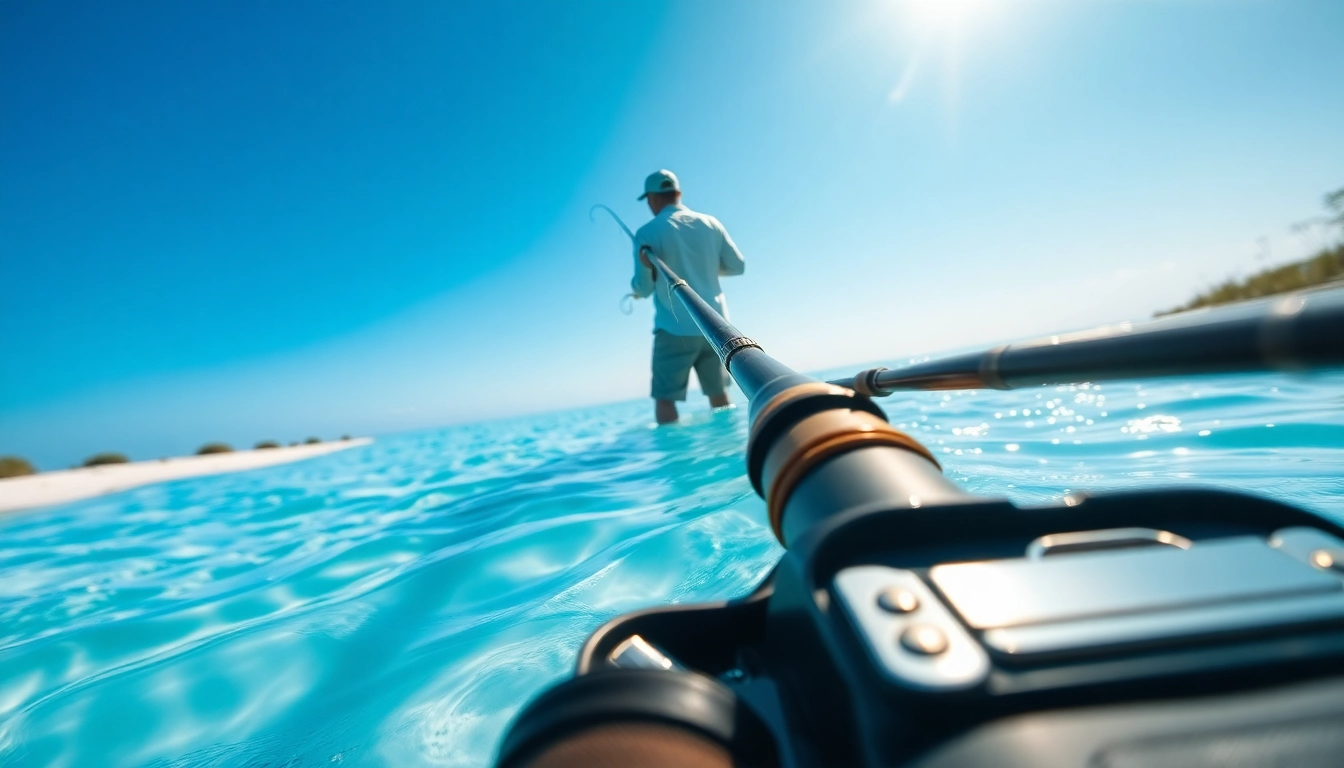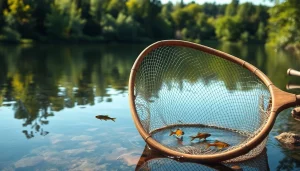Introduction to Saltwater Fly Fishing
Saltwater fly fishing represents one of the most exciting and challenging forms of angling, drawing in enthusiasts who are keen to pursue a variety of fish species in coastal waters. It differs from traditional fishing methods through its unique gear, techniques, and the need for an understanding of marine environments. If you’re looking to dive into the world of Saltwater fly fishing, you’re in for not just a sport, but an adventure filled with vibrant ecosystems and thrilling battles with some of the ocean’s toughest fish. This comprehensive guide will equip you with everything you need to know about saltwater fly fishing, from the essential gear to effective techniques and the most revered fishing locations.
Understanding the Basics of Saltwater Fly Fishing
Saltwater fly fishing is essentially about casting artificial flies to entice fish in saltwater environments. Unlike freshwater fly fishing, which often involves smaller fish like trout, saltwater fly fishing typically attracts larger species, such as tarpon, bonefish, and permit. The requirements of saltwater fishing include a grasp of the tides, the ability to read water conditions, and an understanding that fish behavior can vastly change in coastal regions.
Types of Fish Targeted in Saltwater Fly Fishing
The species targeted in saltwater fly fishing can vary greatly depending on the location, season, and technique used. Some popular targets include:
- Bonefish: Known for their speed and wariness, these fish inhabit shallow flats and require accurate casting.
- Tarpon: Renowned for their epic fights, tarpon are typically found in coastal waters and can reach impressive sizes.
- Permit: Considered one of the most challenging fish to catch, permit require stealthy approaches and specific fly patterns.
- Striped Bass: Found along the Atlantic coast, striped bass are popular among anglers in various saltwater environments.
- Sea Trout: These fish thrive in brackish waters and are often sought after for their delicious meat.
Essential Gear for Saltwater Fly Fishing
Equipping yourself with the right gear is crucial for successful saltwater fly fishing. Here’s a breakdown of the essentials:
Rods and Reels
Your fly rod and reel should be designed to handle the unique challenges of saltwater fishing. Typically, a heavier weight rod (8-10 weight) is preferable to withstand stronger winds and larger fish. Reels should have a robust drag system to manage the power of saltwater species.
Fly Lines
Saltwater fly lines are designed to float and resist the corrosive nature of saltwater. Look for lines that provide excellent casting distance and accuracy, which are essential when targeting skittish fish.
Leaders and Tippets
Using a strong leader is paramount. Monofilament and fluorocarbon leaders provide resilience against abrasive surroundings while allowing for stealthier presentations. A 15-20-pound test line is typical for most saltwater applications.
Flies
The choice of flies is pivotal and can depend on the time of year, location, and targeted species. Popular options include shrimp and baitfish patterns. Matching the local bait is key to success.
Techniques for Successful Saltwater Fly Fishing
Effective Casting Techniques in Saltwater
Considering the windy conditions often found in coastal environments, mastering various casting techniques is essential. The following methods can enhance your success:
Double Haul Cast
This technique involves using both your line hand and rod hand to generate more line speed and distance – perfect for making long casts over choppy water.
Roll Cast
Use this when space is limited behind you. The roll cast allows for a quick rollout of line without requiring a backcast, making it ideal for tight spots.
Reading Tides and Weather for Optimal Fishing
The tide and weather significantly influence fish behavior and feeding patterns. Understanding tidal movements can lead you to the best fishing spots:
Tide Effects
Fish tend to feed actively during incoming tidal flows. Knowledge of both the high and low tides can guide your fishing schedules.
Weather Conditions
Cloudy days can enhance fishing opportunities by making fish more willing to venture into shallow waters. Conversely, bright, sunny days may push fish deeper and require different strategies.
Choosing the Right Flies for Saltwater Conditions
Flies should be chosen based on the targeted species and current conditions. Generally, larger, more colorful and heavily weighted flies are effective in saltwater due to the presence of bigger prey and the need for quick sink rates. Some recommendations include:
- Clouser Minnows: Effective for a wide range of species, these emulate baitfish.
- Crab Patterns: Ideal for permit and bonefish in shallow waters.
- Deceivers: Mimic larger baitfish and can trigger strikes from aggressive predators.
Best Locations for Saltwater Fly Fishing
Top Coastal Destinations for Anglers
Saltwater fly fishing is enjoyed in numerous breathtaking locations around the world. Here are a few revered destinations:
Florida Keys
The Florida Keys are a sanctuary for saltwater fly fishing enthusiasts, offering diverse species and beautiful flats. Sugarloaf Key, for instance, is known for its abundant bonefish population.
The Bahamas
Known for pristine waters and quality fishing, the Bahamas attract anglers targeting bonefish, permit, and tarpon. The Exuma Cays provide unforgettable experiences with less crowded waters.
Costa Rica
This destination boasts both inshore and offshore fishing opportunities. The Pacific coast holds numerous species, including roosterfish and cubera snapper.
Seasonal Considerations for Saltwater Fly Fishing
Seasonal changes can drastically affect your fishing experience. It’s essential to stay informed about the best times of year to target specific species:
Spring
This season marks the return of migratory fish such as tarpon and permit. It’s one of the peak seasons in many coastal regions.
Summer
Summer heat can lead to increased fish activity, especially during dawn and dusk. Targeting deeper waters during midday often yields good results.
Fall
As temperatures cool, fish prepare for winter, making this an excellent season for catching aggressive feeders.
Winter
Many anglers find success in warmer coastal regions during the winter months, as fish tend to gather in shallower waters to search for food.
Local Regulations and Conservation Efforts
Being aware of local regulations is crucial for both legal and conservation reasons. Many regions have specific rules regarding catch limits, seasons, and designated protected areas to ensure sustainable fishing.
Furthermore, responsible fishing practices help preserve marine ecosystems. This entails using barbless hooks, practicing catch-and-release protocols, and being conscious of your environmental impact.
Common Challenges in Saltwater Fly Fishing
Overcoming Equipment Malfunctions
Equipment issues can lead to frustrating fishing experiences. Common problems include broken tippets, jamming reels, or tangled lines. Here are some solutions:
Pre-Trip Inspections
Before setting out, inspect your rod, reel, and lines for wear and tear. Carry spare tippet and repair tools for quick fixes while on the water.
Dealing with Changing Weather Conditions
Weather can change rapidly in coastal areas, disrupting fishing plans. Stay flexible and incorporate backup plans based on the forecast. Being able to adapt to conditions, such as adjusting fishing times or locations, can lead to successful days on the water.
Adapting Techniques When Fish Aren’t Biting
Days with low activity can test any angler’s patience. If fish aren’t biting:
Change Flies
Switching your fly pattern can make a difference. Try matching local bait or changing colors and sizes to spark interest.
Move Frequently
Don’t hesitate to pick up and move to different spots. Fish populations can vary greatly over small distances.
Advanced Strategies for Experienced Anglers
Mastering Saltwater Fly Fishing Techniques
As you grow more confident in your saltwater fly fishing abilities, experimenting with advanced techniques can significantly enhance your success. This includes mastering various retrieval styles, such as stripping techniques that mimic distressed bait, or adopting different rod angles to control line paths more effectively.
Using Technology to Enhance Your Fishing
Embracing technology can give anglers an edge. Consider using fishing apps for tracking tides and weather patterns, or employing sonar technology to locate fish more efficiently. Drones can also assist in scouting distant or less accessible areas.
Building a Community Around Saltwater Fly Fishing
Engaging with fellow enthusiasts can foster growth and knowledge sharing. Participate in local fishing clubs, online forums, or social media groups dedicated to saltwater fly fishing. These platforms provide access to valuable tips, communal support, and shared experiences that can elevate your angling skills.


